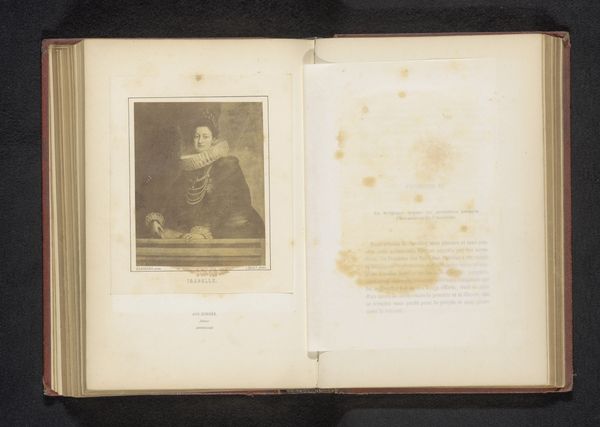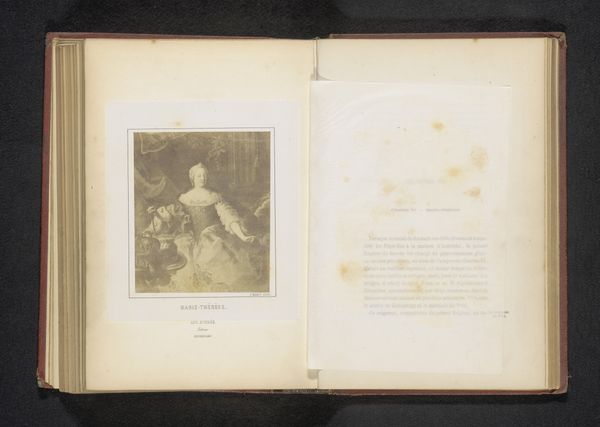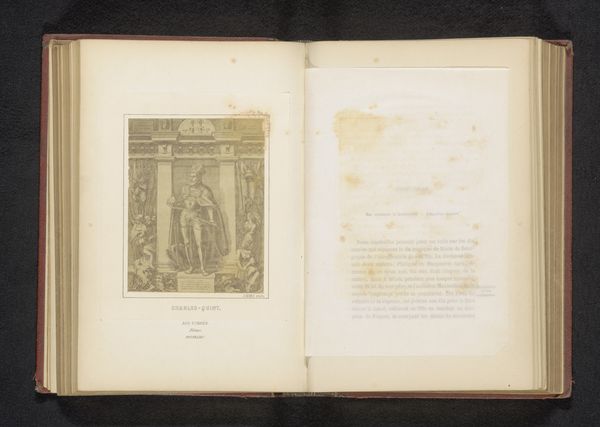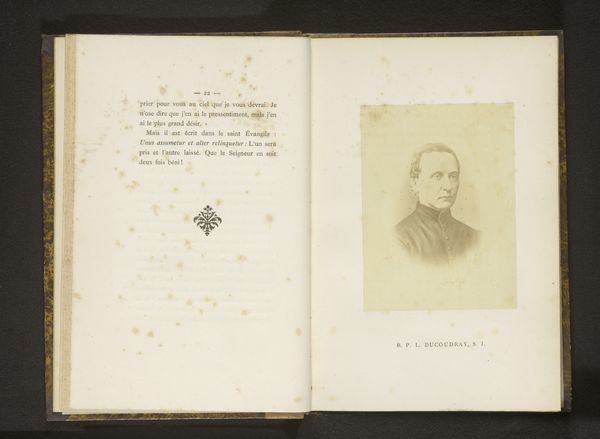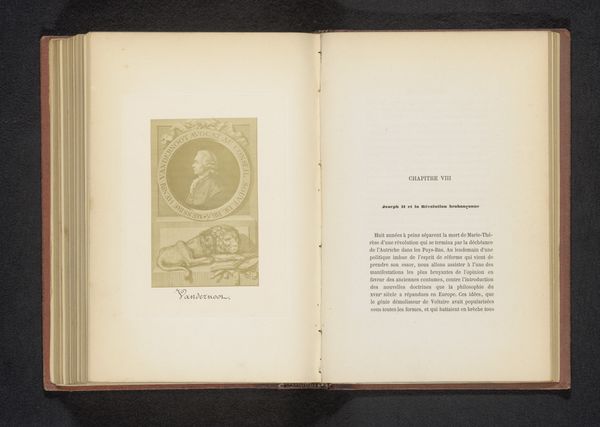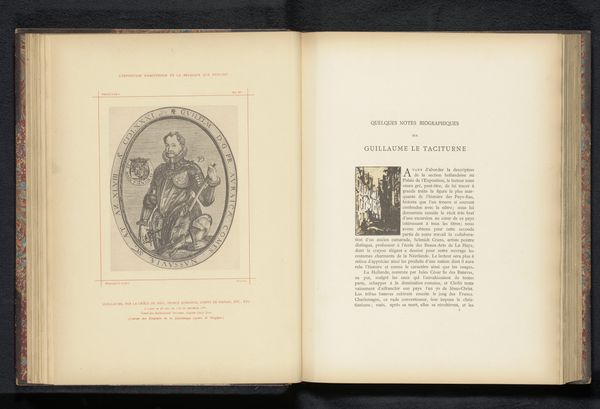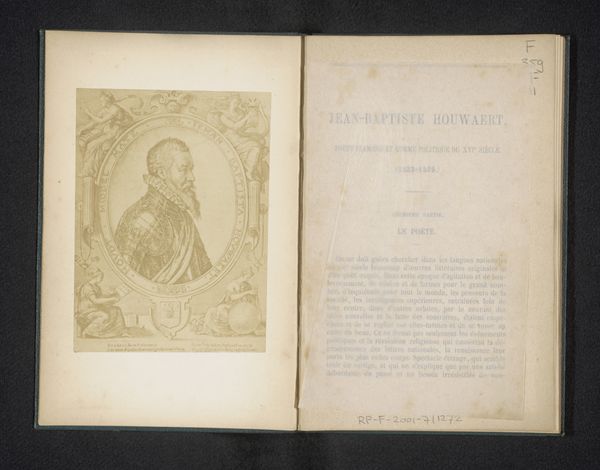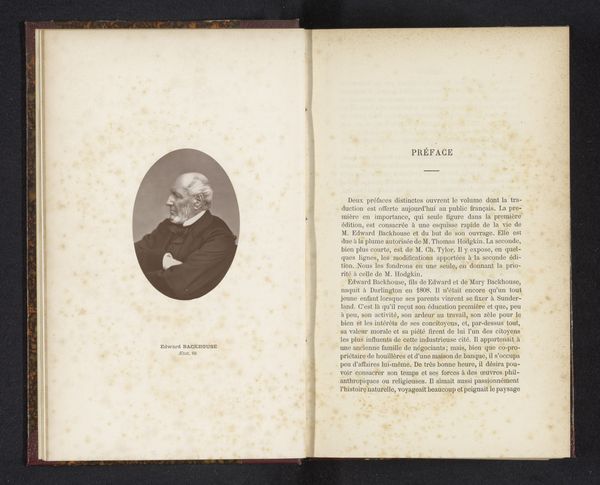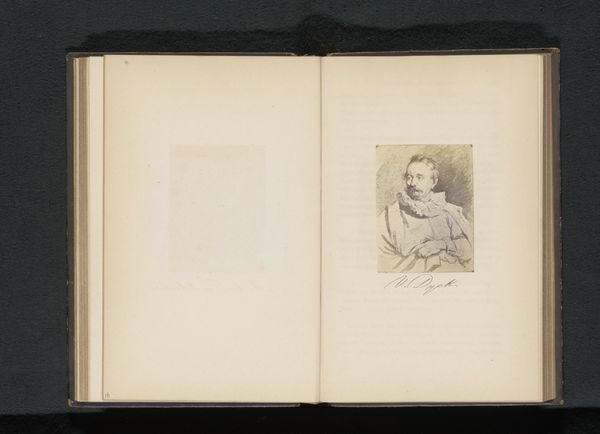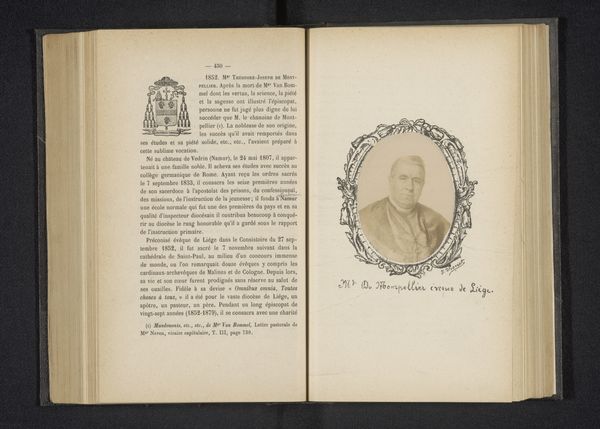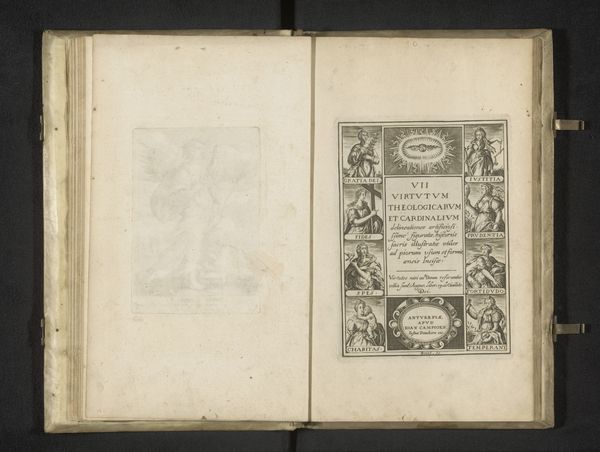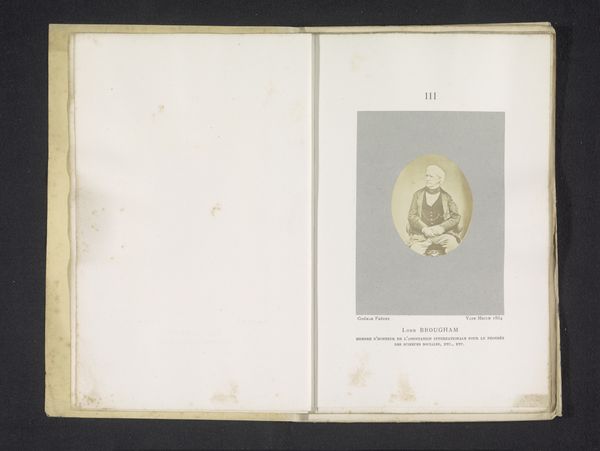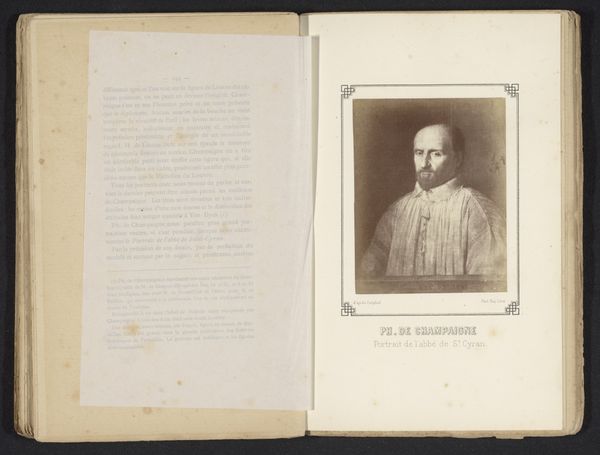
Fotoreproductie van een portret van Filips van Marnix van Sint-Aldegonde door Jacob de Gheyn before 1860
0:00
0:00
print, paper, ink, engraving
#
portrait
# print
#
paper
#
11_renaissance
#
ink
#
coloured pencil
#
history-painting
#
engraving
Dimensions: height 94 mm, width 83 mm
Copyright: Rijks Museum: Open Domain
Editor: This is a photo reproduction of a portrait of Filips van Marnix van Sint-Aldegonde by Jacob de Gheyn, created before 1860. It appears to be an engraving, a print on paper using ink, maybe even coloured pencil? I find it intriguing, like a little window into another time through the material quality of an old book. What strikes you most about this piece? Curator: I'm interested in the reproduction itself. What labor went into recreating de Gheyn's original engraving? What was the intended audience and social context for distributing these photographic reproductions in a pre-digital age? The use of printing allows for wider distribution than would be possible otherwise. The cost and labor necessary to make copies democratizes the work of art by placing it into more homes than previously possible. How does this affect our view of art now? Editor: That's fascinating! So you're thinking about the accessibility of art through its reproduction? Does this challenge the traditional idea of the "original" artwork and its unique value? Curator: Precisely. Consider the materials. We have ink, paper, and photographic chemicals all working together. Where were these sourced? What kind of labour extracted, processed, and turned those resources into something with value? We often only consider the ‘art’ on the page, while ignoring the economic networks making possible distribution and reception. Editor: That's something I never really considered before! Thinking about all those invisible hands… it really shifts my perspective. Curator: Right. The layering of materials – the paper itself, the ink, and the photographic emulsion - adds to its historical context. A true material history! Editor: Absolutely! Thanks to your insights, I'm beginning to see how a seemingly simple print reveals much more about production and society than I initially realized. Curator: Exactly! By studying the materials, techniques and dissemination of this reproduction, we gain insights into the socio-economic factors shaping its meaning.
Comments
No comments
Be the first to comment and join the conversation on the ultimate creative platform.
